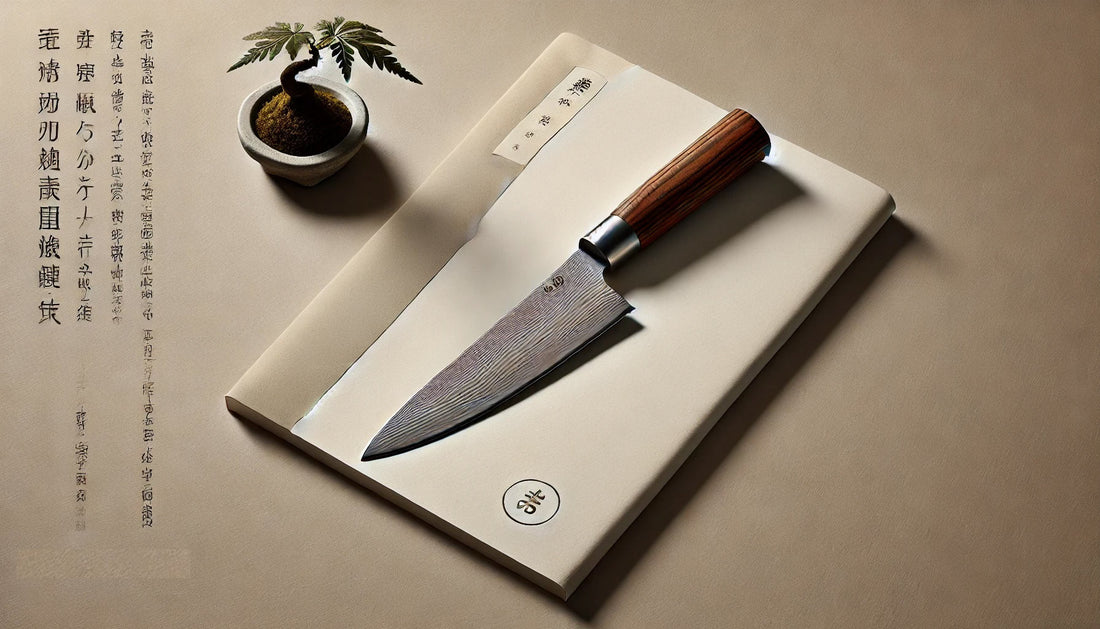
Full-Tang vs. Half-Tang Knives: Which One is Better for Your Kitchen?
Share
When choosing a high-quality kitchen knife, you’ll often see the terms full-tang and half-tang—but what do they actually mean? And how does the tang construction impact the knife's performance?
A knife’s tang refers to how far the blade extends into the handle. While full-tang knives are commonly associated with durability, a high quality half-tang knife can offer the same strength while improving agility and precision. Understanding the differences will help you choose the best knife for your needs.
What is a Full-Tang Knife?
A full-tang knife has a blade that extends through the entire length of the handle. This construction maximizes durability and balance, which makes full-tang knives popular for heavy-duty cutting.
Advantages of Full-Tang Knives
- Maximum durability – The continuous steel construction prevents breakage.
- Weight distribution – A full tang adds stability, mainly for heavier tasks.
- Ideal for high-force cutting – Best for breaking down large cuts of meat or hard vegetables.
Disadvantages of Full-Tang Knives
- Added weight – Can feel bulky for precision slicing.
- Handle design limitations – Some full-tang knives sacrifice comfort for durability.
What is a Half-Tang Knife?
A half-tang knife has a blade that extends only partially into the handle but is reinforced with high-quality materials to ensure stability. Many high-end Japanese knives use a half-tang design to provide a lighter, more precise cutting experience.
Advantages of Half-Tang Knives
- Lightweight design – Reduces hand fatigue during prolonged use.
- Greater agility and control – Ideal for precision slicing and intricate cuts.
- More ergonomic handle options – Allows for improved balance and comfort.
Disadvantages of Half-Tang Knives
- Requires expert craftsmanship – A poorly made half-tang knife may lack durability.
- Not suited for extreme force – Best for controlled, precise cutting rather than heavy-duty chopping.
Does Full-Tang or Half-Tang Matter in High-End Knives?
The belief that full-tang knives are always superior is outdated. Many professional chefs prefer half-tang knives for their lighter weight, precise balance and ease of handling.
Japanese-style knives, for example, are often designed with a half-tang construction to maintain agility while ensuring strength through advanced forging techniques. When engineered properly, a half-tang knife delivers the same durability as a full-tang model while offering improved maneuverability.
For those who prioritize control, sharpness, and comfort, a high-quality half-tang knife provides the best balance of strength and precision.
Choosing the Right Knife for Your Needs
Rather than focusing solely on tang type, consider:
- Your cooking style – Full tang is ideal for heavy-duty work, while half tang is better for precision or daily tasks.
- Blade material – High-quality steel affects performance more than tang length.
- Handle comfort – A well-balanced knife should feel natural in hand.
A well-crafted half-tang knife, made with premium steel and expert engineering, delivers the perfect combination of durability, agility, and balance.
Final Thoughts
A carefully designed half-tang knife offers the strength needed for daily use while enhancing precision and comfort. For those who value balance, control, and durability, a high-quality half-tang knife is the ideal choice.
